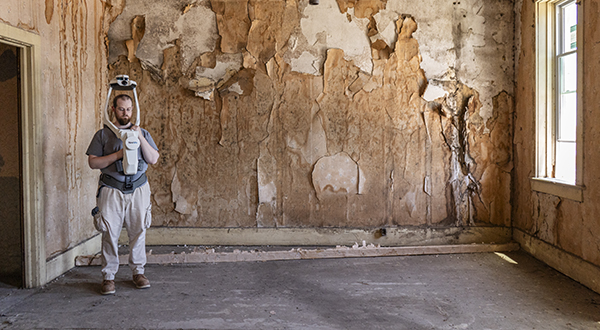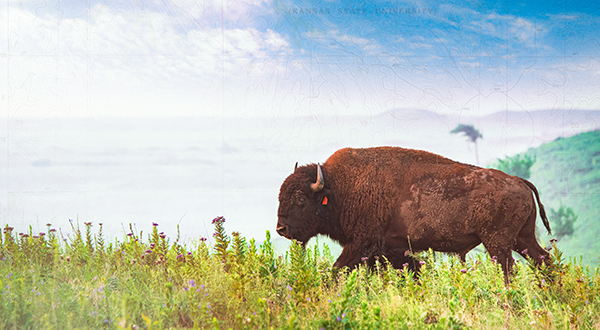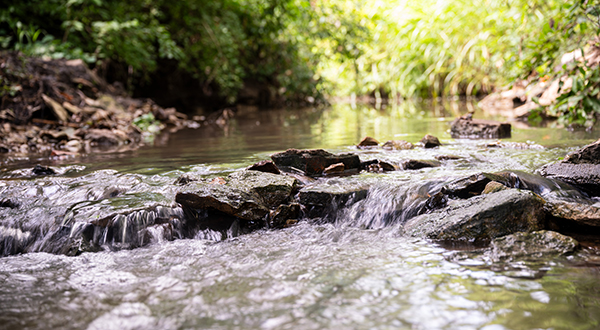The case for a walk outside
Kinesiologists want routine outdoor activity to be part of mental health care
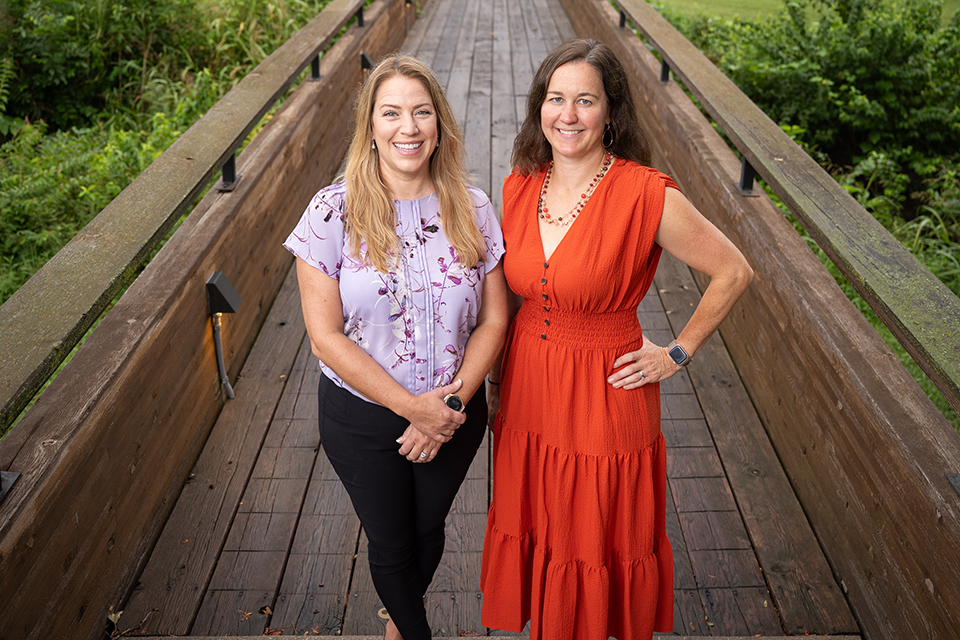 Gina Besenyi and Emily Mailey, associate professors of kinesiology in Kansas State University’s College of Health and Human Sciences, are building the evidence base for nature-based physical activity as a component of mental healthcare.
Gina Besenyi and Emily Mailey, associate professors of kinesiology in Kansas State University’s College of Health and Human Sciences, are building the evidence base for nature-based physical activity as a component of mental healthcare.
By Rafael Garcia
K-State News and Communications Services
As people grow up, sometimes they forget the joy of being active outside.
They start attaching imaginary rules to it — that it has to be for a certain amount of time, that it has to be for a specific purpose, that they have to sweat for it to count — that act as barriers to being active or going outside in the first place.
Gina Besenyi and Emily Mailey, associate professors of kinesiology in Kansas State University’s College of Health and Human Sciences, want to change that perception.
They want adults around the world to rediscover the joy and wonder of being outside, and to rekindle the mental health benefits that nature and physical activity provide.
“When we can tell people that they don’t have to follow any of those perceived rules about being active outside, it opens up the door for them to imagine themselves as people who do physical activity and enjoy it, without any sense of dread,” Mailey said.
As part of two related research grants, kinesiologists aim to build evidence for the mental health benefits of nature-based physical activity, such as park walks. Additionally, they seek to develop a common framework for mental health providers to apply this concept in therapeutic contexts.
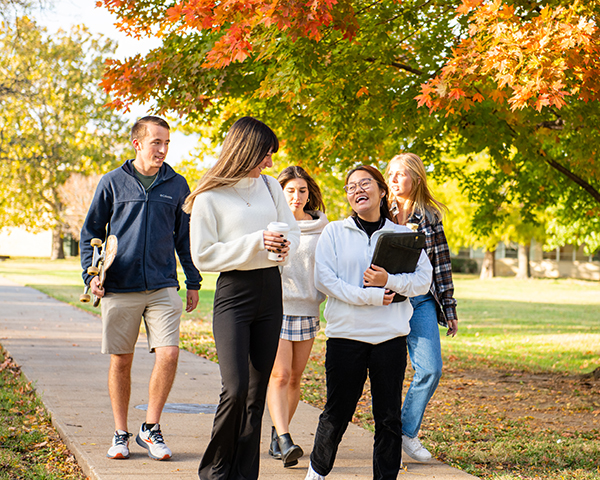
Building the case for nature-based physical activity
Most people intuitively understand the mental health benefits of being outside, Mailey said.
But there is surprisingly little evidence underlying that assumption — mainly because the concept really has not been well studied, at least in the context of diagnosed mental health disorders.
“There’s a lot of literature that talks about improved psychological well-being and reduced stress, but not as much in terms of diagnosed depression and anxiety and improvements in those symptoms or conditions from time in nature,” she said. “These projects look to build a bigger evidence base, demonstrating clinical improvements associated with nature exposure.”
Mailey, in partnership with Besenyi, is leading a study funded by a $50,000 grant from the REI Cooperative Action Fund to collect specific data on the effectiveness of nature-based physical activity as a treatment for diagnosed mental health disorders.
“...Our current work is building the evidence that physical activity is so good for mental health that we need to incorporate or recommend it in mental health care.”
The researchers will recruit and train mental health therapists in the region to engage in outdoor “walk-and-talk” therapy sessions with clients who will be outfitted with physical activity trackers over the course of 10 weekly therapy sessions. The therapists will also work with those clients to set goals for nature-based physical activity outside of the sessions and work through any barriers or challenges they may face.
At the outset and after the 10 weeks of sessions, Mailey and Besenyi will examine clients’ scores on a set of standardized mental health indicators.
“Right now, physical activity is not a routine part of mental health care,” Mailey said. “But maybe it should be, and our current work is building the evidence that physical activity is so good for mental health that we need to incorporate or recommend it in mental health care.”
Helping college students reconnect with nature
As part of a separate $50,000 grant from the Lauren S. Aaronson Frontiers Clinical and Translational Research Pilot Program, the researchers are developing a nature-based physical activity toolkit and training intervention for mental health providers to use when working with college students.
Research cites an immense and increasing need for these kinds of interventions. More than 60% of U.S. college students met the criteria for at least one mental health problem, per a 2022 national survey by the Healthy Minds Study.
Over the course of the 2024-2025 academic year, Mailey and Besenyi will work with K-State’s Counseling and Psychological Services to create a student therapy group called Moving Naturally Through Challenges, with a primary focus on therapy through nature-based physical activity.
Following the model of their other project, the researchers will provide mental health providers with specialized training materials. These materials include educational handouts and videos, worksheets for students, case study examples, maps of local parks and physical activity resources, and guides for leading group nature experiences.
“If this training and intervention is effective, we could roll this out on a broader scale,” Mailey said. “Most universities and colleges have a mental health care system. This is something we could train people at other universities to do.”
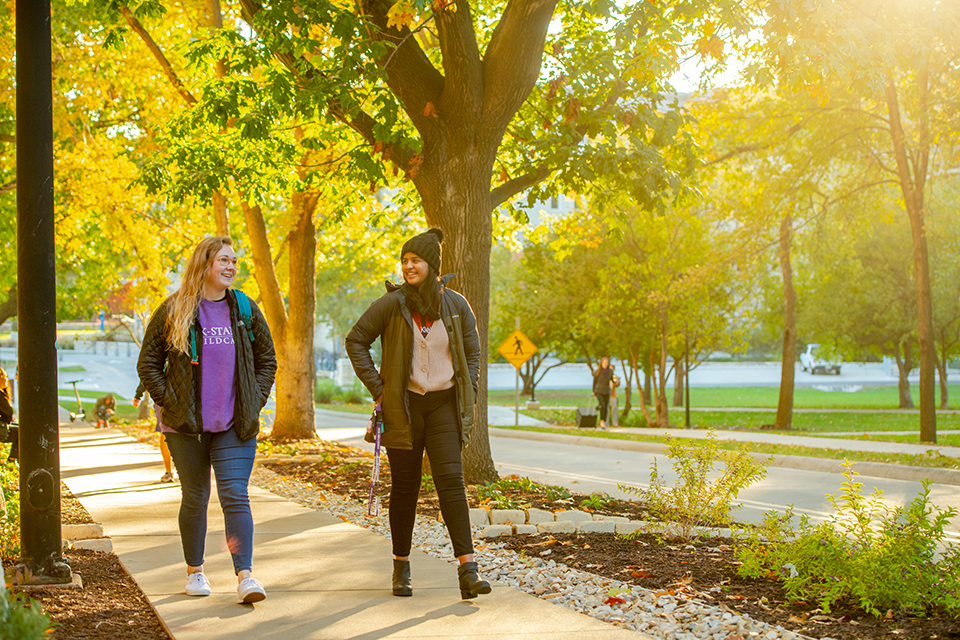 The first — and only — step to taking the perfect walk outside is a literal one. Kinesiologists Gina Besenyi and Emily Mailey say that the key point is simply getting outside.
The first — and only — step to taking the perfect walk outside is a literal one. Kinesiologists Gina Besenyi and Emily Mailey say that the key point is simply getting outside.
Nature as public infrastructure
In addition to researching nature-based physical activity as therapy for anxiety and depression, these projects also align with the researchers’ broader goal of separating physical activity from fitness culture, emphasizing its benefits beyond appearances or weight loss.
“There’s a different connotation associated with going for a walk outside where there’s an apparent connection to mental health,” Mailey said. “The therapists we’ve talked to feel more comfortable recommending that compared to telling clients to go to a gym, because there’s just a different feel, and the main goal is to get people to be active for the purpose of their mental health.”
Eventually, Besenyi and Mailey hope that by completing their pilot studies and developing a framework for integrating nature-based physical activity into mental health therapy, larger efforts and studies will follow.
Additional studies could lead to more widespread use of nature-based physical activity in clinical settings.
“With these studies, maybe parks could be seen as public health resources and be funded the same way a community might invest in a health clinic or a road.”
“Physicians won’t accept a drug unless it’s been thoroughly vetted,” Besenyi said. “It’s the same thing here. We have to show all of this evidence that physical activity in nature does induce clinical changes for them to say okay, this is a legitimate treatment option.”
The research could also spur a closer look at the concept of outdoor spaces, such as parks and trails, not just as recreation spaces, but public health spaces.
Besenyi points out that during the early months of the pandemic, much of the public flocked to these public nature areas. Although that demonstrated the potential of the spaces, it also revealed the lack of resources, maintenance and care necessary to support high public useage.
“With these studies, maybe parks could be seen as public health resources and be funded the same way a community might invest in a health clinic or a road. If they could be funded, viewed and valued in that capacity, beyond just recreation, imagine how differently we might design our communities,” Besenyi said.
“We could be more thoughtful about that, and not see these spaces only as ‘nice to have,’ but as a requirement,” she continued. “We could have zoning policies and regulations that require sidewalks in every neighborhood, and that there be bike lanes and trees and green space in a way that’s thoughtful and good for the public’s health.”

